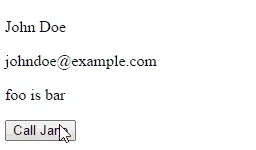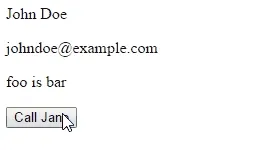Recursive setState() in ReactJS
I’ve started working with reactjs and using it with backbone. I was really enjoying working with it, until, I hit a road block with setState method. The documentation (at the time of writing v0.12.2) stated the following:
Merges nextState with the current state. This is the primary method you use to trigger UI updates from event handlers and server request callbacks. In addition, you can supply an optional callback function that is executed once
setStateis completed and the component is re-rendered.
The problem
The line Merges nextState with the current state lead me in thinking that it will merge the nextState completely or recursively. Lets see that as an example:
var SomeComponent = React.createClass({
getInitialState: function () {
return {
user: {
name: 'John Doe',
email: 'johndoe@example.com',
},
foo: 'bar',
};
},
callJane: function () {
this.setState({ user: { name: 'Jane Doe' } });
},
render: function () {
return (
<div>
<p>{this.state.user.name}</p>
<p>{this.state.user.email}</p>
<p>foo is {this.state.foo}</p>
<button onClick={this.callJane}>Call Jane</button>
</div>
);
},
});
React.render(<SomeComponent />, document.getElementsByTagName('body')[0]);When I click Call Jane, I expected just the name to be updated. But as you can see below, the email also vanished.

Upon inspection, I found out that the setState merges states only up to single level. So the following InitialState
{
user: {
name: "John Doe",
email: "johndoe@example.com"
},
foo : "bar"
}was expected to be
{
user: {
name: "Jane Doe",
email: "johndoe@example.com"
},
foo : "bar"
}But It turned out to be:
{
user: {
name: "Jane Doe"
},
foo : "bar"
}The solution
I looked into utility libraries like underscore, lodash, etc.. Lodash has a merge method and jQuery has $.extend method that merge objects recursively. So I put together a quick mixin for recursive set state.
//Using jQuery.extend
var setStateRecursiveMixin = {
setStateRecursive: function (nextState) {
var prevState = this.state;
this.setState($.extend(true, {}, prevState, nextState));
},
};
//Using Lodash.merge
var setStateRecursiveMixin = {
setStateRecursive: function (nextState) {
var prevState = this.state;
this.setState(_.merge(prevState, nextState));
},
};It can be used as follows
var SomeComponent = React.createClass({
mixins: [setStateRecursiveMixin],
getInitialState: function () {
return {
user: {
name: 'John Doe',
email: 'johndoe@example.com',
},
foo: 'bar',
};
},
callJane: function () {
this.setStateRecursive({ user: { name: 'Jane Doe' } });
},
render: function () {
return (
<div>
<p>{this.state.user.name}</p>
<p>{this.state.user.email}</p>
<p>foo is {this.state.foo}</p>
<button onClick={this.callJane}>Call Jane</button>
</div>
);
},
});
React.render(<SomeComponent />, document.getElementsByTagName('body')[0]);See the mixin in action below:
